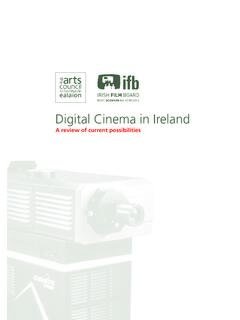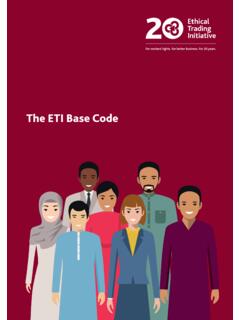Transcription of Indian Accounting Standard (Ind AS) 38 Intangible Assets
1 Indian Accounting Standard (Ind AS) 38 Intangible AssetsIndian Accounting Standard 38 Intangible AssetsContents ParagraphsOBJECTIVE1 SCOPE2 7 DEFINITIONS8 17 Intangible assets9 17 Identifiability11 12 Control13 16 Future economic benefits17 RECOGNITION AND MEASUREMENT18 67 Separate acquisition25 32 Acquisition as part of a business combination33 43 Measuring the fair value of an Intangible asset acquired in a business combination35 41 Subsequent expenditure on an acquired in-process research and development project42 43 Acquisition by way of a government grant44 Exchanges of assets45 47 Internally generated goodwill48 50 Internally generated Intangible assets51 67 Research phase54 56 Development phase57 64 Cost of an internally generated Intangible asset65 67 RECOGNITION OF AN EXPENSE68 71 Past expenses not to be recognised as an asset71 MEASUREMENT AFTER RECOGNITION72 87 Cost model74 Revaluation model75 87 USEFUL LIFE88 96 Intangible Assets WITH FINITE
2 USEFUL LIVES97 106 Amortisation period and amortisation method97 99 Residual value100 103 Review of amortisation period and amortisation method104 106 Intangible Assets WITH INDEFINITE USEFUL LIVES107 110 Review of useful life assessment109 110 RECOVERABILITY OF THE CARRYING AMOUNT-IMPAIRMENT LOSSES111 RETIREMENTS AND DISPOSALS112 117 DISCLOSURE118 128 General118 123 Intangible Assets measured after recognition using the revaluation model124 125 Research and development expenditure126 127 Other information128 ILLUSTRATIVE EXAMPLESA ssessing the useful lives of Intangible assetsAPPENDICESA Intangible Assets Web Site Costs B References to matters contained in other Indian Accounting Standards1 Comparison with IAS 38, Intangible AssetsIndian Accounting Standard 38 Intangible Assets (This Indian Accounting Standard includes paragraphs set in bold type and plain type, which have equal authority. Paragraphs in bold type indicate the main principles.)
3 Objective1 The objective of this Standard is to prescribe the Accounting treatment for Intangible Assets that are not dealt with specifically in another Standard . This Standard requires an entity to recognise an Intangible asset if, and only if, specified criteria are met. The Standard also specifies how to measure the carrying amount of Intangible Assets and requires specified disclosures about Intangible Standard shall be applied in Accounting for Intangible Assets , except(a) Intangible Assets that are within the scope of another Standard ;(b)financial Assets , as defined in Ind AS 32 Financial Instruments: Presentation;(c)the recognition and measurement of exploration and evaluation Assets (see Ind AS 106 Exploration for and Evaluation of Mineral Resources); and(d)expenditure on the development and extraction of minerals, oil, natural gas and similar non-regenerative another Standard prescribes the Accounting for a specific type of Intangible asset, an entity applies that Standard instead of this Standard .
4 For example, this Standard does not apply to:(a) Intangible Assets held by an entity for sale in the ordinary course of business (see Ind AS 2 Inventories and Ind AS 11 Construction Contracts).(b)deferred tax Assets (see Ind AS 12 Income Taxes).(c)leases that are within the scope of Ind AS 17 Leases.(d) Assets arising from employee benefits (see Ind AS 19 Employee Benefits).(e)financial Assets as defined in Ind AS 32. The recognition and measurement of some financial Assets are covered by Ind AS 27 Consolidated and Separate Financial Statements, Ind AS 28 Investments in Associates and Ind AS 31 Interests in Joint Ventures.(f)goodwill acquired in a business combination (see Ind AS 103 Business Combinations).(g)deferred acquisition costs, and Intangible Assets , arising from an insurer s contractual rights under insurance contracts within the scope of Ind AS 104 Insurance Contracts.
5 Ind AS 104 sets out specific disclosure requirements for those deferred acquisition costs but not for those Intangible Assets . Therefore, the disclosure requirements in this Standard apply to those Intangible Assets .(h)non-current Intangible Assets classified as held for sale (or included in a disposal group that is classified as held for sale) in accordance with Ind AS 105 Non-current Assets Held for Sale and Discontinued Intangible Assets may be contained in or on a physical substance such as a compact disc (in the case of computer software), legal documentation (in the case of a licence or patent) or film. In determining whether an asset that incorporates both Intangible and tangible elements should be treated under Ind AS 16 Property, Plant and Equipment or as an Intangible asset under this Standard , an entity uses judgement to assess which element is more significant.
6 For example, computer software for a computer-controlled machine tool that cannot operate without that specific software is an integral part of the related hardware and it is treated as property, plant and equipment. The same applies to the operating system of a computer. When the software is not an integral part of the related hardware, computer software is treated as an Intangible Standard applies to, among other things, expenditure on advertising, training, start-up, research and development activities. Research and development activities are directed to the development of knowledge. Therefore, although these activities may result in an asset with physical substance (eg a prototype), the physical element of the asset is secondary to its Intangible component, ie the knowledge embodied in the case of a finance lease, the underlying asset may be either tangible or Intangible .
7 After initial recognition, a lessee accounts for an Intangible asset held under a finance lease in accordance with this Standard . Rights under licensing agreements for items such as motion picture films, video recordings, plays, manuscripts, patents and copyrights are excluded from the scope of Ind AS 17 and are within the scope of this from the scope of a Standard may occur if activities or transactions are so specialised that they give rise to Accounting issues that may need to be dealt with in a different way. Such issues arise in the Accounting for expenditure on the exploration for, or development and extraction of, oil, gas and mineral deposits in extractive industries and in the case of insurance contracts. Therefore, this Standard does not apply to expenditure on such activities and contracts. However, this Standard applies to other Intangible Assets used (such as computer software), and other expenditure incurred (such as start-up costs), in extractive industries or by following terms are used in this Standard with the meanings specified:An active market is a market in which all the following conditions exist:(a)the items traded in the market are homogeneous;(b)willing buyers and sellers can normally be found at any time; and(c)prices are available to the is the systematic allocation of the depreciable amount of an Intangible asset over its useful asset is a resource:(a)controlled by an entity as a result of past events.
8 And(b)from which future economic benefits are expected to flow to the amount is the amount at which an asset is recognised in the balance sheet after deducting any accumulated amortisation and accumulated impairment losses is the amount of cash or cash equivalents paid or the fair value of other consideration given to acquire an asset at the time of its acquisition or construction, or, when applicable, the amount attributed to that asset when initially recognised in accordance with the specific requirements of other Indian Accounting standards , eg Ind AS 102 Share-based amount is the cost of an asset, or other amount substituted for cost, less its residual is the application of research findings or other knowledge to a plan or design for the production of new or substantially improved materials, devices, products, processes, systems or services before the start of commercial production or value is the present value of the cash flows an entity expects to arise from the continuing use of an asset and from its disposal at the end of its useful life or expects to incur when settling a value of an asset is the amount for which that asset could be exchanged between knowledgeable, willing parties in an arm s length impairment loss is the amount by which the carrying amount of an asset exceeds its recoverable Intangible asset is an identifiable non-monetary asset without physical Assets are money held and Assets to be received in fixed or determinable amounts of is original and planned investigation undertaken with the prospect of gaining new scientific or technical knowledge and residual value of an Intangible asset is the estimated amount that an entity would currently obtain from disposal of the asset.
9 After deducting the estimated costs of disposal, if the asset were already of the age and in the condition expected at the end of its useful life is:(a)the period over which an asset is expected to be available for use by an entity;(b)the number of production or similar units expected to be obtained from the asset by an assets7 Entities frequently expend resources, or incur liabilities, on the acquisition, development, maintenance or enhancement of Intangible resources such as scientific or technical knowledge, design and implementation of new processes or systems, licences, intellectual property, market knowledge and trademarks (including brand names and publishing titles). Common examples of items encompassed by these broad headings are computer software, patents, copyrights, motion picture films, customer lists, mortgage servicing rights, fishing licences, import quotas, franchises, customer or supplier relationships, customer loyalty, market share and marketing all the items described in paragraph 9 meet the definition of an Intangible asset, ie identifiability, control over a resource and existence of future economic benefits.
10 If an item within the scope of this Standard does not meet the definition of an Intangible asset, expenditure to acquire it or generate it internally is recognised as an expense when it is incurred. However, if the item is acquired in a business combination, it forms part of the goodwill recognised at the acquisition date (see paragraph 68).Identifiability9 The definition of an Intangible asset requires an Intangible asset to be identifiable to distinguish it from goodwill. Goodwill recognised in a business combination is an asset representing the future economic benefits arising from other Assets acquired in a business combination that are not individually identified and separately recognised. The future economic benefits may result from synergy between the identifiable Assets acquired or from Assets that, individually, do not qualify for recognition in the financial asset is identifiable if it either:(a)is separable, ie is capable of being separated or divided from the entity and sold, transferred, licensed, rented or exchanged, either individually or together with a related contract, identifiable asset or liability, regardless of whether the entity intends to do so; or(b)arises from contractual or other legal rights, regardless of whether those rights are transferable or separable from the entity or from other rights and entity controls an asset if the entity has the power to obtain the future economic benefits flowing from the underlying resource and to restrict the access of others to those benefits.

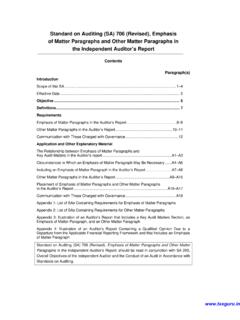
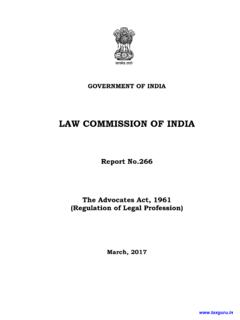



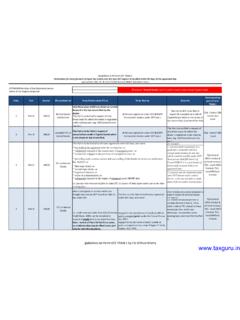
![TAX DEDUCTION AT SOURCE [TDS]](/cache/preview/9/f/0/5/3/6/e/1/thumb-9f0536e1f15bf9dfca51b550636c04d3.jpg)






